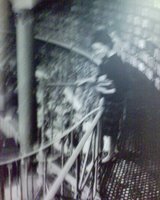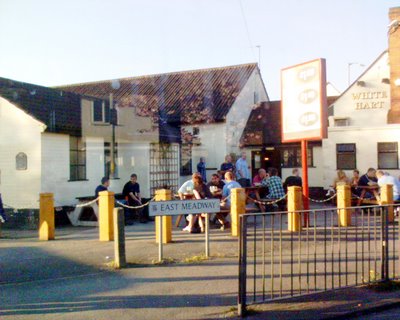 the toffee coloured glazed bricks
the toffee coloured glazed bricks of Moor Street station opposite Selfridges in the Birmingham Bullring, where the 97 sets down passengers, and the bus turned up just as I wanted to take the third picture of the panorama. I had to go in to get a refund of a duplicate senior rail pass.
 the second library reading room beloved of my teenage years researching a James Watt beam engine and the Great Western Railway broad gauge.
the second library reading room beloved of my teenage years researching a James Watt beam engine and the Great Western Railway broad gauge.
 photo of a photo of the old dome
photo of a photo of the old dome
The first library was burned down in 1879, and this fine victorian edifice survived the german bombs and blitz only to fall to the city councillors. It had a wonderful broad staircase with a polished brass handrail to the bannister.
Today on the fifth floor of Birmingham Central Library there is the collection of the calenders of WILLS and ADMONS filling nearly a whole wall of shelves.
 Wills and Admons
Wills and Admons of 1887 - Calender of the Grants of Probate and Letters of Administration made in the
Probate Registries of the High Court of Justice in England,
togther with Irish Probates and Scotch Confirmations resealed in England during the year 1887London printed by Eyre and Spottiswoode printed to the order of . . ..?? . . .for Her Majesty's Stationary OfficeI found several references to my Monmouthshire family's wills
so I need
value pound historical money - Google SearchEconomic History Resources - What Is Its Relative Value in U.K. Pounds?which has a choice of including from one to all five of :-Retail Price Index
GDP Deflator
Average Earnings
Per Capita GDP
GDP
 the last of the original cloth bindings 1943
the last of the original cloth bindings 1943 and my notebook
In 2004, £5782 7s 8d from 1935 and the will of my grandfather
Alfed Henry Watkins (13 AUG 1862 Highmead, Llanvair Kilgeddin, Monmouthshire to 2 JAN 1935 Woodbank, Usk) was worth: -
£260,054.63 using the retail price index,
£273,334.82 using the GDP deflator,
£971,584.66 using average earnings,
£1,127,899.09 using per capita GDP,
£1,439,955.66 using the GDP
Edward Jones merchant Raglan (his wife's father) In 2004, £7403 17s 8d from 1900 was worth £4,615,294.70 using the GDP, and his father;
John Jones 5 Castle Street, Raglan In 2004, £4593 3s 2d from 1887 was worth
£4,221,351.77 using the GDP.
PROBATE - LoveToKnow Article written in 1911 on PROBATE: "The Court of Probate Act 1857 transferred the jurisdiction both voluntary and contentious of all ecclesiastical, royal peculiar, peculiar and manorial courts to the court of probate thereby constituted, created a judge and registrars of that court, abolished the old exclusive rights in testamentary matters of the advocates of Doctors Commons, and laid down rules of procedure. Contentious jurisdiction was given to county courts when the personal estate of the deceased was under 200 in value.
The Judicature Act 1873 merged the old court of probate in the probate divorce and admiralty division of the High Court of Justice. The division now consists of the president and one other judge. The practice of the division is mainly regulated by the rules of the Supreme Court 1883."
GENUKI: Ireland Probate: "'Amongst the various sources of information open to the genealogist, it is generally admitted that Wills occupy the most important place.
From a testamentary document, it is often possible to obtain particulars of three or four generations of a family, besides a general insight into the extent of civilization and social position of our ancestors.' [Sir Arthur Vicars, Office of Arms, Dublin Castle, November 1897]"
 getting ready to cycle homehis and hers with crash helmets
getting ready to cycle homehis and hers with crash helmets
seen as I walked down to my 97 bus
 White Hart public house at the city boundary seen from the bus means I am nearly home. Because of the new ban on smoking in bars., I think that pub gardens are going to become very popular.
White Hart public house at the city boundary seen from the bus means I am nearly home. Because of the new ban on smoking in bars., I think that pub gardens are going to become very popular.
 the toffee coloured glazed bricks
the toffee coloured glazed bricks the second library reading room
the second library reading room  photo of a photo
photo of a photo Wills and Admons
Wills and Admons the last of the original cloth bindings 1943
the last of the original cloth bindings 1943  getting ready to cycle home
getting ready to cycle home White Hart
White Hart


